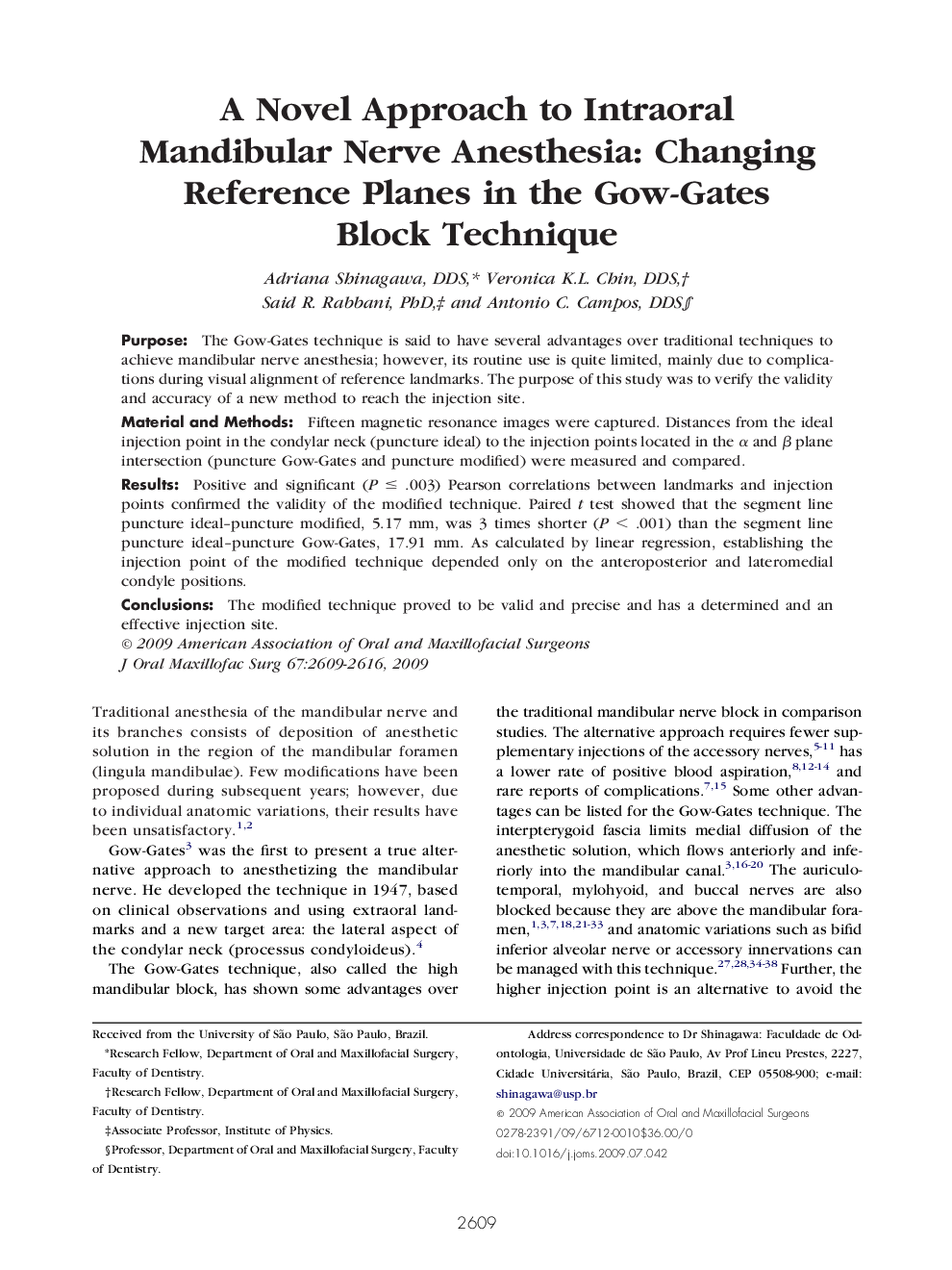| Article ID | Journal | Published Year | Pages | File Type |
|---|---|---|---|---|
| 3158436 | Journal of Oral and Maxillofacial Surgery | 2009 | 8 Pages |
PurposeThe Gow-Gates technique is said to have several advantages over traditional techniques to achieve mandibular nerve anesthesia; however, its routine use is quite limited, mainly due to complications during visual alignment of reference landmarks. The purpose of this study was to verify the validity and accuracy of a new method to reach the injection site.Material and MethodsFifteen magnetic resonance images were captured. Distances from the ideal injection point in the condylar neck (puncture ideal) to the injection points located in the α and β plane intersection (puncture Gow-Gates and puncture modified) were measured and compared.ResultsPositive and significant (P ≤ .003) Pearson correlations between landmarks and injection points confirmed the validity of the modified technique. Paired t test showed that the segment line puncture ideal–puncture modified, 5.17 mm, was 3 times shorter (P < .001) than the segment line puncture ideal–puncture Gow-Gates, 17.91 mm. As calculated by linear regression, establishing the injection point of the modified technique depended only on the anteroposterior and lateromedial condyle positions.ConclusionsThe modified technique proved to be valid and precise and has a determined and an effective injection site.
